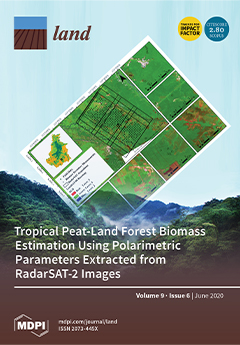Resource information
The ongoing global deforestation resulting from anthropogenic activities such as unsustainable agriculture and surface mining threatens biodiversity and decreases both soil carbon and above-ground biomass stocks. In this study, we assessed soil properties and below- and above-ground biomass attributes in a restored former gravel mine area in Ghana two decades after active restoration with potted plants and fresh topsoil. We compared conditions to four alternative land-use types (unrestored abandoned gravel mine, arable land, semi-natural forest, and natural forest) representing pre- and post-disturbance as well as natural reference states. We hypothesized that soil properties and related levels of below- and above-ground biomass in the restored area share similarities with the natural reference systems and thereby are indicative of a trajectory towards successful restoration. Eight replicated subareas in each land-use type were assessed for a set of soil parameters as well as below- and above-ground biomass attributes. The soil properties characteristic for the restored area differed significantly from pre-restoration stages, such as the abandoned gravel site, but did not differ significantly from properties in the natural forest (except for bulk density and base saturation). Above-ground biomass was lower in the restored area in comparison to the reference natural forests, while differences were not significant for below-ground biomass. Silt and effective cation exchange capacity were closely related to above-ground biomass, while below-ground biomass was related to soil organic carbon, bulk density, and potassium concentration in soils. Our results suggest that major steps towards successful restoration can be accomplished within a relatively short period, without the wholesale application of topsoil. Improving soil conditions is a vital tool for the successful development of extensive vegetation cover after surface mining, which also affects carbon sequestration by both above- and below-ground biomass. We emphasize that the use of reference systems provides critical information for the monitoring of ecosystem development towards an expected future state of the restored area.


